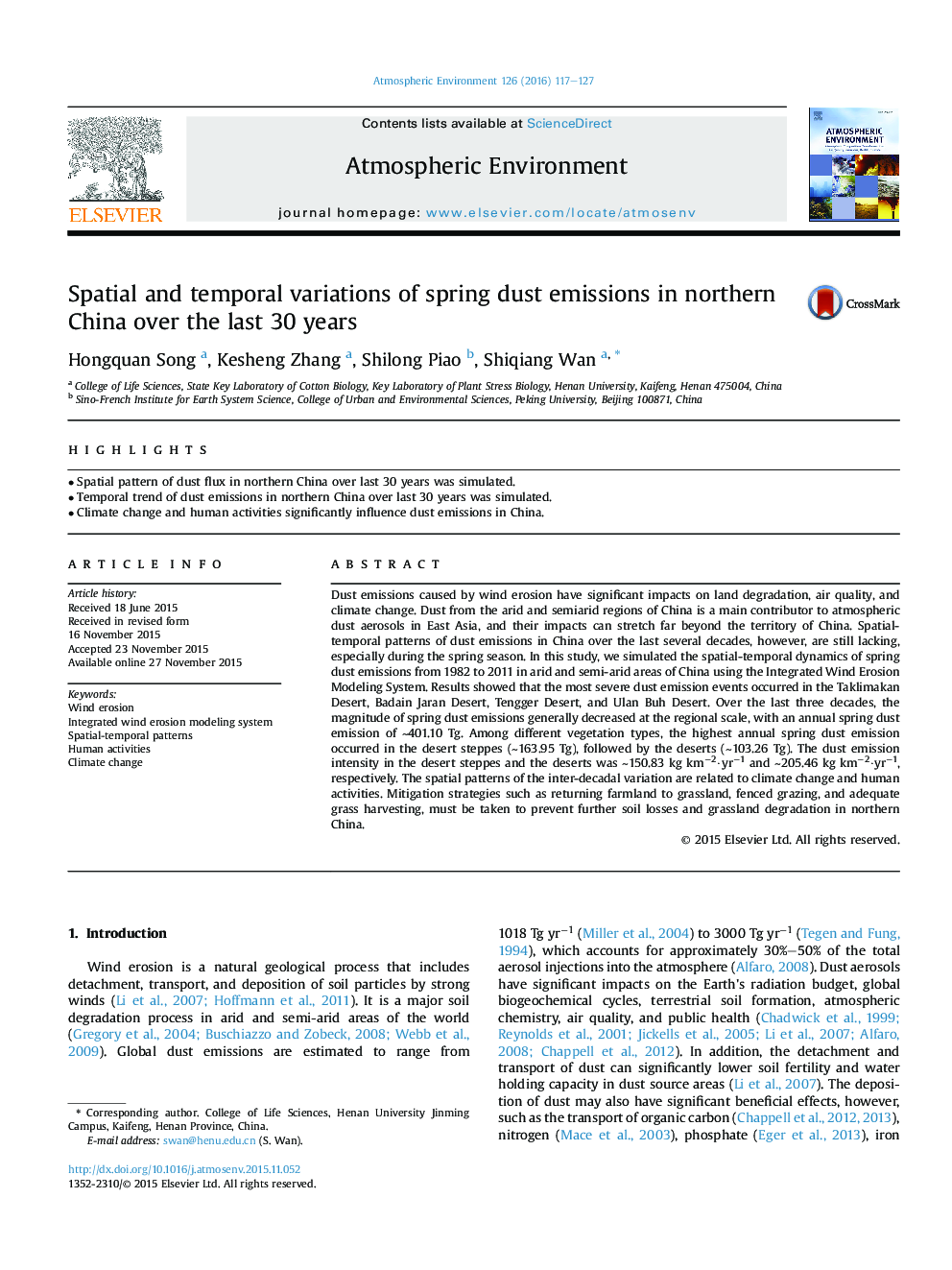| Article ID | Journal | Published Year | Pages | File Type |
|---|---|---|---|---|
| 6337170 | Atmospheric Environment | 2016 | 11 Pages |
Abstract
Dust emissions caused by wind erosion have significant impacts on land degradation, air quality, and climate change. Dust from the arid and semiarid regions of China is a main contributor to atmospheric dust aerosols in East Asia, and their impacts can stretch far beyond the territory of China. Spatial-temporal patterns of dust emissions in China over the last several decades, however, are still lacking, especially during the spring season. In this study, we simulated the spatial-temporal dynamics of spring dust emissions from 1982 to 2011 in arid and semi-arid areas of China using the Integrated Wind Erosion Modeling System. Results showed that the most severe dust emission events occurred in the Taklimakan Desert, Badain Jaran Desert, Tengger Desert, and Ulan Buh Desert. Over the last three decades, the magnitude of spring dust emissions generally decreased at the regional scale, with an annual spring dust emission of â¼401.10 Tg. Among different vegetation types, the highest annual spring dust emission occurred in the desert steppes (â¼163.95 Tg), followed by the deserts (â¼103.26 Tg). The dust emission intensity in the desert steppes and the deserts was â¼150.83 kg kmâ2·yrâ1 and â¼205.46 kg kmâ2·yrâ1, respectively. The spatial patterns of the inter-decadal variation are related to climate change and human activities. Mitigation strategies such as returning farmland to grassland, fenced grazing, and adequate grass harvesting, must be taken to prevent further soil losses and grassland degradation in northern China.
Related Topics
Physical Sciences and Engineering
Earth and Planetary Sciences
Atmospheric Science
Authors
Hongquan Song, Kesheng Zhang, Shilong Piao, Shiqiang Wan,
